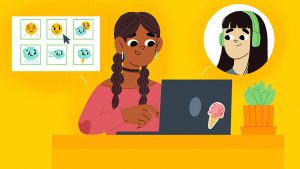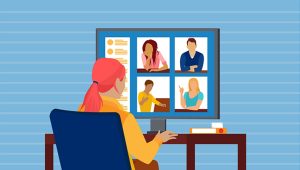3 Digital Therapy Tools

Mental Health Apps
There are various mental health apps available to help young people improve their mental health. Some of these applications focus on meditation and mindfulness skills, while others target anxiety and depression using cognitive behavioural therapy.
Benefits:
- Enables students to learn practical mental health skills and strategies in a comfortable and accessible manner.
- Many students prefer to share their mental health concerns anonymously through an app instead of in-person with a professional.
- Many apps are free or low-cost, making them cost-effective.
MindShift is a Canadian evidence-based app that helps youth manage anxiety symptoms through cognitive behavioural therapy. It is widely recognized by educational institutions around the country.
Daylio is a mood-tracking and journaling tool that allows users to explore and document their mood throughout the day. Users can set goals for themselves, such as sleep habits, meal reminders, and an exercise schedule.
Headspace is a self-monitoring meditation and sleep app that includes topics like sleep, exercise, and deep focus. A 2022 review of 14 randomized controlled trials found that headspace reduced depressive symptoms in 75% of the cases.
consideration:
- Navigating mental health apps can be challenging due to their ever-changing nature. Furthermore, The mental health app market is largely unregulated, with some companies making claims that lack scientific support and peer-reviewed studies. As a result, considerable consideration is required before integrating such apps into the educational context.
- Consider how student’s data will be collected and shared via the app. Many of these apps collect sensitive personal data, such as mental state and personal information, which might put youth at risk if shared.
- Remind students that mental health apps should not substitute professional support systems and services.

Digital Check-Ins.
Online check-ins allow students to self-report their overall well-being in class. Students can digitally convey their emotions to their teachers using images, emojis, or text. The advantages of digital check-ins include that they are faster, more convenient, and more informative than paper checks.
Considerations:
- Establish clear procedures for supporting struggling students.
- Ensure check-ins are accessible, especially for students with disabilities.

AI Monitoring Software:
School boards are increasingly turning to digital technologies to help address at-risk students in their classrooms. AI surveillance software can track, report, and monitor student’s behaviour and identify those who are struggling with mental health issues, particularly those with suicidal ideations. The software operates in the background of school-owned devices, flagging any alarming keywords.
Considerations:
- AI-based monitoring tools may violate student’s privacy.
- A considerable amount of data about students’ web activity, personal messaging, and personal information is collected and stored. Though A.I companies have pledged to protect students personal information, there are presently no strong regulations governing how companies use, store, and distribute personal information.
- AI algorithms can be biased towards marginalized communities, flagging content pertaining to race, gender, and sexuality.
- More evidence is needed to demonstrate the effectiveness and equity of AI monitoring systems.
References
Laird, E., Dwyer, M., Grant-Chapman, H., & The Center for Democracy & Technology. (2023). EdTech threats to student privacy and equity in the age of AI. https://cdt.org/wp-content/uploads/2023/09/091923-CDT-Off-Task-web.pdf
School Mental Health Ontario.(2022). School Mental Health Decision Support Tool: Student Mental Health Awareness Initiatives. https://smho-smso.ca/wp-content/uploads/2020/11/Decision-Support-Tool-Student-Mental-Health-Awareness-Initiatives-Version-for-School-Administrators.pdf
